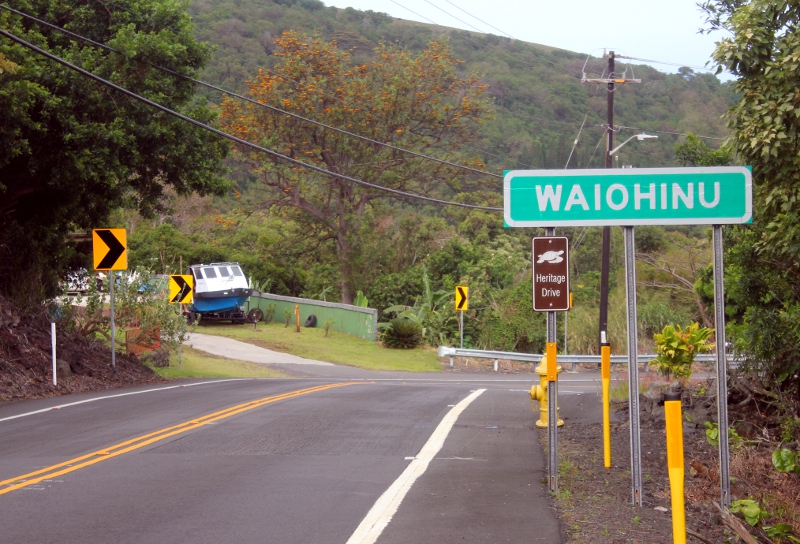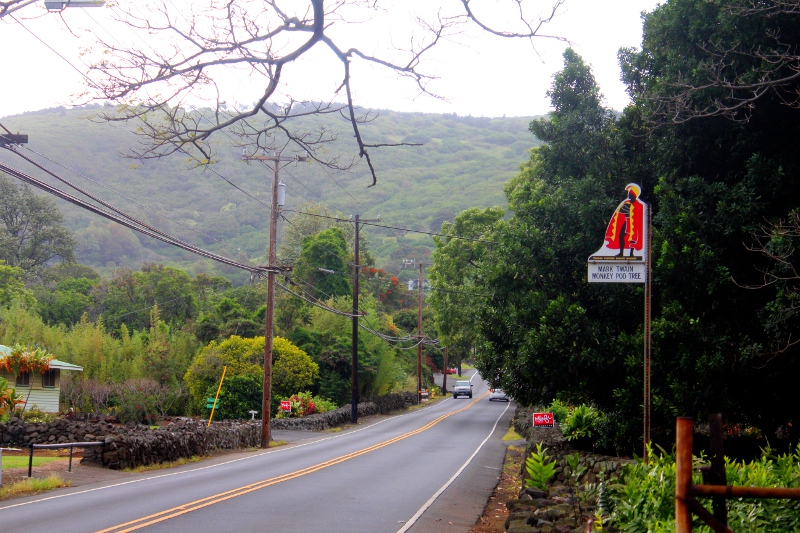
Sitting just 2 miles west of Na’alehu, the historic town of Waiohinu is a mere shell of its former self. Driving through this miniscule community one would have no idea that this area has supported human activity longer than anywhere else in Hawaii. It’s believed that the polynesian settlers made their first landfall near Ka Lae (South Point) just maikai (towards the ocean) from where Waiohinu now sits. Fish hook artifacts found inside a cave in the area referred to as H8 yeilded dates around 100 C.E.
Waiohinu, meaning “Shiny water” was originally built on a stream that flowed continuously through the village. In the 1800’s sugar cane plantations modified the watershed for their own purposes and today the stream is nonexistent. There are several explanations as to how the town got its name. One legend states that long ago the wife of a chief died here and when her body was washed in the stream it produced an oil that shimmered on the surface. In 1866 when Mark Twain visited this place he was told that the name translated to “Sparkling water” and that it referred to the stream.

Though it’s only 2 miles west of Na’alehu, Waiohinu is much wetter it’s next door neighbor. Here it rains almost daily and clouds are common near the highway. A short drive south on Kamaoa Road usually gets you out of the wet weather. Waiohinu has several residential subdivisions in the south, as well as the Discovery Harbor golf course. There are several bed and breakfasts in the South Point area, and Waiohinu is also home to the historic Shirakawa Hotel, built in 1934.
Once home to several thousand, the courthouse, jail, post office, and school were all located in Waiohinu intil the 1930s when the population shifted to Na’alehu. The town was nearly destroyed by a lava flow from Mauna Loa on April 16, 1926. The lava reached the hillside above the town, but Waiohinu was spared.
Today the only attraction in Waiohinu town is Mark Twain’s Monkeypod Tree. Clearly labeled by a Hawaiian Warrior sign, the tree sits on the eastern side of town on the Mauka (upland) side of the highway. Quiet, quaint, and historic, there is more than meets the eye in this tiny Hawaiian village.
